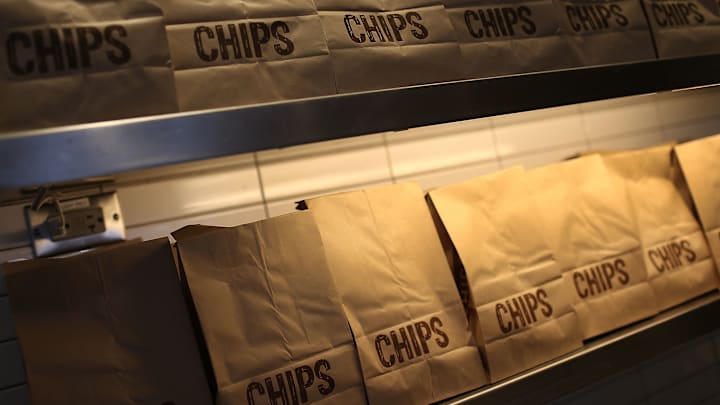In many cases, using robots and artificial intelligence to complete tasks traditionally done by people is meant to increase uniformity and cut down on human error. The goal for “Chippy,” a robotic arm programmed to make Chipotle tortilla chips, is a little different.
As Food & Wine reports, Chippy is the result of a collaboration between Chipotle innovators and Miso Robotics—the robotics firm behind “Flippy,” a similar robotic arm that formerly flipped burgers at a White Castle in Chicago. (Flippy was recently replaced by Flippy 2, which is also headed to dozens of other White Castle locations.)
Chippy is supposed to make tortilla chips exactly like its human counterparts do: cooked with the same proportions of corn masa flour, water, and sunflower oil; and sprinkled with salt and lime juice. And just as humans sometimes distribute that salt and lime juice a bit unevenly, so too will Chippy.
“Everyone loves finding a chip with a little more salt or an extra hint of lime,” Nevielle Panthaky, Chipotle’s vice president of culinary, said in a press release. “To ensure we didn’t lose the humanity behind our culinary experience, we trained Chippy extensively to ensure the output mirrored our current product, delivering some subtle variations in flavor that our guests expect.”

Right now, the chip-churning kitchen assistant is still going through testing at the Chipotle Cultivate Center in Irvine, California, but the company expects to install it at one of Chipotle’s Southern California locations sometime this year. As for whether Chipotle employees will feel threatened by Chippy’s perfectly imperfect culinary capabilities, only time will tell—but it seems like there’s a fairly good chance that some will welcome the help. As Chipotle chief technology officer Curt Garner told CNBC, Chippy was conceived after workers were asked for their thoughts on ways to improve the restaurant. “[Up] at the top of the list was a better way to make chips,” he said.
[h/t Food & Wine]
